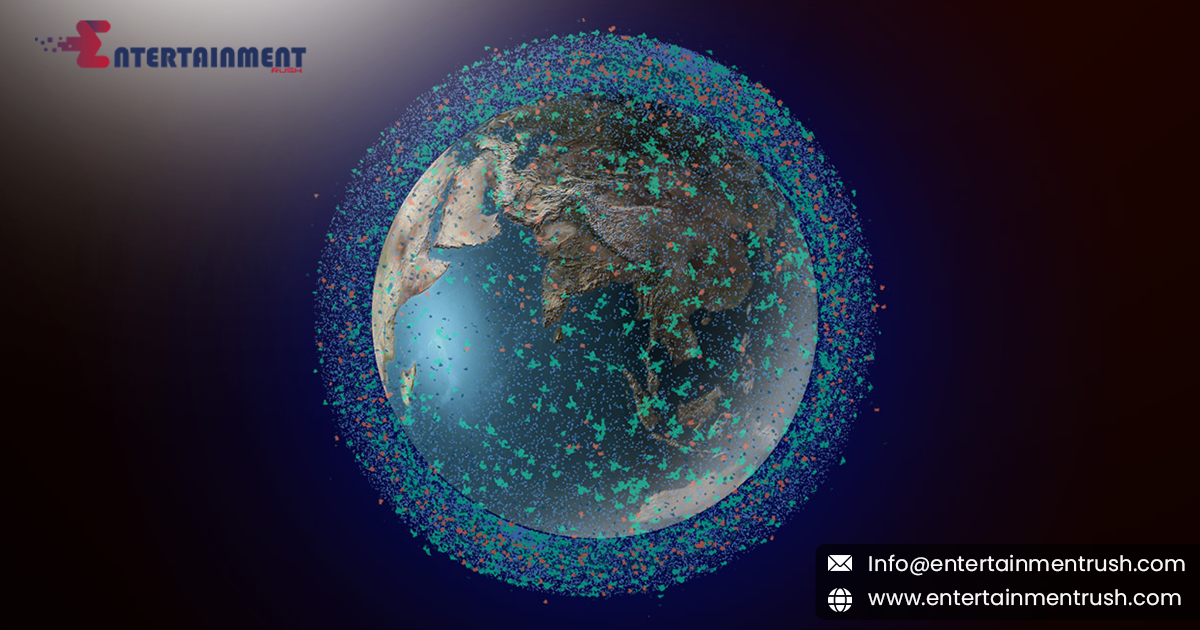In the vast expanse of space surrounding our planet, a growing and urgent problem is emerging: space junk, also known as orbital debris. This debris consists of defunct satellites, spent rocket stages, fragments from disintegration, and other remnants of past space missions. As humanity’s presence in space has expanded, so too has the accumulation of this hazardous clutter. Today, the issue of space junk represents a significant threat to the sustainability of space activities, endangering satellites, manned space missions, and the International Space Station (ISS). Addressing the orbital debris crisis is crucial for ensuring the safety and longevity of future space endeavors.
The Growing Threat of Orbital Debris
The problem of space junk has been escalating since the dawn of the space age. Every launch leaves behind some form of debris, and collisions between objects in orbit generate even more fragments, leading to a cascading effect known as the Kessler Syndrome. This scenario, proposed by NASA scientist Donald J. Kessler in 1978, describes a situation where the density of objects in low Earth orbit (LEO) is high enough that collisions between objects could cause a chain reaction, creating even more debris and increasing the likelihood of further collisions. The Kessler Syndrome threatens to make certain orbital regions unusable for new satellites and missions. As of now, the U.S. Space Surveillance Network tracks over 27,000 pieces of orbital debris larger than 10 centimeters. However, there are millions of smaller pieces that, despite their size, can still cause catastrophic damage due to their high velocity. For instance, a small paint fleck traveling at several kilometers per second can impact the force of a bullet, posing serious risks to operational spacecraft. The sheer volume of debris increases the probability of collisions, which could have devastating consequences for both current and future space operations.
The Impact on Current and Future Space Missions
The proliferation of space junk poses a dire threat to both manned and unmanned missions. Satellites, which play a crucial role in communications, weather forecasting, navigation, and scientific research, are particularly vulnerable. A collision with even a small piece of debris can render a satellite inoperable, leading to significant financial losses and disruptions in services. The ISS, housing astronauts and conducting vital scientific experiments, frequently has to perform avoidance maneuvers to steer clear of potential collisions with debris, adding complexity and risk to its operations. Looking ahead, the ambitious plans of various spacefaring nations and private companies for deploying satellite mega-constellations further complicate the issue. Projects like SpaceX’s Starlink, Amazon’s Project Kuiper, and OneWeb aim to launch thousands of satellites to provide global internet coverage. While these initiatives hold immense potential for improving global connectivity, they also significantly increase the number of objects in orbit, heightening the risk of collisions and the creation of additional debris.
Strategies for Mitigating Space Junk
Addressing the space junk crisis requires a multifaceted approach, involving both mitigation and active removal strategies. Mitigation involves designing new spacecraft and missions with debris reduction in mind. This includes measures such as deorbiting defunct satellites and spent rocket stages, enhancing the durability and operational lifespan of satellites, and developing technologies for collision avoidance. International guidelines and best practices, like those outlined by the Inter-Agency Space Debris Coordination Committee (IADC), advocate for post-mission disposal plans to ensure that satellites are removed from orbit within 25 years of mission completion. Active debris removal (ADR) is another critical component of addressing the orbital debris crisis. Several innovative concepts are being explored to physically remove debris from orbit. These include robotic arms and nets that can capture debris, harpoons to spear and retrieve objects, and even lasers to alter the trajectory of debris to facilitate its reentry into the Earth’s atmosphere, where it can burn up harmlessly. Japan’s space agency JAXA and private companies like Astroscale are at the forefront of developing and testing these technologies.
The Role of International Cooperation
The challenge of space junk is a global one, transcending national boundaries and requiring international cooperation. No single country or organization can address this issue alone. Collaboration among spacefaring nations is essential for developing and enforcing regulations, sharing data on orbital debris, and coordinating efforts for debris mitigation and removal. The United Nations Office for Outer Space Affairs (UNOOSA) and the Committee on the Peaceful Uses of Outer Space (COPUOS) play vital roles in fostering international dialogue and cooperation on space sustainability.Moreover, public-private partnerships are crucial in driving innovation and funding for debris removal technologies. Governments can incentivize private companies to develop ADR solutions through contracts, grants, and regulatory frameworks that promote responsible behavior in space operations. The involvement of the private sector is particularly important given the increasing commercial activities in space.
Ensuring the Sustainability of Space
Cleaning up space junk is not just about safeguarding current space missions; it is about ensuring the long-term sustainability of space activities for future generations. The orbital debris crisis represents one of the most significant environmental challenges of our time, extending beyond our planet’s surface. By adopting comprehensive mitigation strategies, investing in active debris removal technologies, and fostering international cooperation, we can tackle this pressing issue effectively. The future of space exploration and utilization depends on our ability to address the growing threat of orbital debris. As we continue to push the boundaries of what is possible in space, we must also take responsibility for the environmental impact of our activities. By doing so, we can preserve the space environment as a shared resource, enabling continued scientific discovery, technological advancement, and the expansion of human presence beyond Earth.




Leave feedback about this